Logic and Set Theory - Probing the Philosophy of Mathematics
Welcome to the fascinating world of logic and set theory, where the foundations of mathematics are not only built but also challenged. Have you ever pondered why numbers behave the way they do or how we can categorize different objects? These questions lead us down a rabbit hole of philosophical inquiry, where both logic and set theory play pivotal roles. Understanding these concepts is not just for mathematicians; it's for anyone curious about the nature of truth and existence in the mathematical realm.
At its core, logic is the framework that governs mathematical reasoning. It provides the tools we need to construct and validate arguments, ensuring that our conclusions stem from sound premises. Imagine logic as the glue that holds the intricate tapestry of mathematics together. Without it, our mathematical statements would be as flimsy as a house of cards. Set theory, on the other hand, introduces us to the idea of collections of objects. It allows us to discuss and manipulate groups of numbers, shapes, or even abstract entities in a structured way. This interplay between logic and set theory forms the bedrock of mathematical thought, inviting us to explore deeper philosophical implications.
As we dive deeper, we will uncover how these foundational elements not only help us solve mathematical problems but also provoke questions about the very nature of reality. Are mathematical objects real, or do they merely exist in our minds? What happens when we encounter paradoxes that challenge our understanding? These are the questions that bridge the gap between mathematics and philosophy, making the study of logic and set theory not just an academic pursuit, but a profound exploration of existence itself.
Logic serves as the backbone of mathematical reasoning. It helps us understand the structure of arguments and the relationships between different statements. In this section, we will delve into the principles of formal logic, including propositional logic and predicate logic. Propositional logic deals with statements that can be either true or false, while predicate logic extends this by incorporating quantifiers and variables, allowing us to express more complex relationships. The significance of these logical systems cannot be overstated; they are essential for constructing mathematical proofs that are both rigorous and convincing.
Set theory provides a framework for discussing collections of objects, enabling mathematicians to categorize and analyze various mathematical structures. At its core, a set is simply a collection of distinct objects, considered as an object in its own right. But what makes set theory so powerful? It allows us to explore relationships between different sets, such as subsets and the operations we can perform on them. Understanding these concepts is crucial for anyone looking to grasp the complexities of mathematics, as they underpin everything from basic arithmetic to advanced calculus.
Different types of sets, such as finite, infinite, and empty sets, play crucial roles in mathematics. Let's break it down:
- Finite Sets: These contain a limited number of elements, like the set of integers from 1 to 10.
- Infinite Sets: These have no bounds, such as the set of all natural numbers.
- Empty Sets: This set contains no elements at all, often denoted by ∅.
Each type of set has unique properties and implications, making them essential for various mathematical discussions and proofs.
The distinction between finite and infinite sets is fundamental in mathematics. Finite sets are like a small garden you can easily count, while infinite sets resemble the vast universe—endless and ungraspable. Understanding this distinction helps mathematicians navigate through various concepts, such as limits and convergence, which are crucial in calculus and analysis.
Power sets are fascinating constructs that consist of all subsets of a given set. For instance, if we have a set A {1, 2}, the power set of A, denoted as P(A), would be {∅, {1}, {2}, {1, 2}}. This concept reveals interesting properties, such as the fact that the power set of a set with n elements contains 2n elements. Power sets are especially relevant in combinatorial mathematics, where they help us understand the various ways we can group or select items from a larger collection.
Set operations like union, intersection, and difference are essential for manipulating sets. These operations allow us to combine sets, find common elements, or determine what is left when one set is removed from another. Here’s a brief overview of these operations:
- Union ( ∪ ): Combines all elements from two sets.
- Intersection ( ∩ ): Finds common elements between sets.
- Difference ( − ): Identifies elements in one set that are not in another.
Understanding these operations is crucial for solving mathematical problems and forming new sets based on existing ones.
Set theory raises profound questions about the nature of mathematical objects. Are sets real entities, or are they merely convenient fictions? This section explores philosophical debates surrounding the existence and interpretation of sets in mathematics, inviting us to question our assumptions about mathematical reality.
The debate between mathematical realism and anti-realism centers on the existence of mathematical entities. Realists argue that mathematical objects exist independently of human thought, while anti-realists contend that these entities are constructs of our minds. This discussion has significant implications for set theory, as it influences how we interpret the existence of sets and their elements.
Set theory is not without its paradoxes, such as Russell's Paradox, which challenges our understanding of sets. This paradox arises when we consider the set of all sets that do not contain themselves. The implications of such paradoxes are profound, as they force mathematicians and philosophers alike to rethink the foundations of mathematics and the principles that govern it.
- What is the importance of logic in mathematics? Logic provides the framework for constructing valid arguments and proofs, ensuring that mathematical reasoning is sound.
- How does set theory relate to other areas of mathematics? Set theory serves as a foundational language for discussing collections of objects, influencing areas such as algebra, calculus, and topology.
- What are some real-world applications of set theory? Set theory is used in computer science, statistics, and various fields of engineering to model and analyze data.
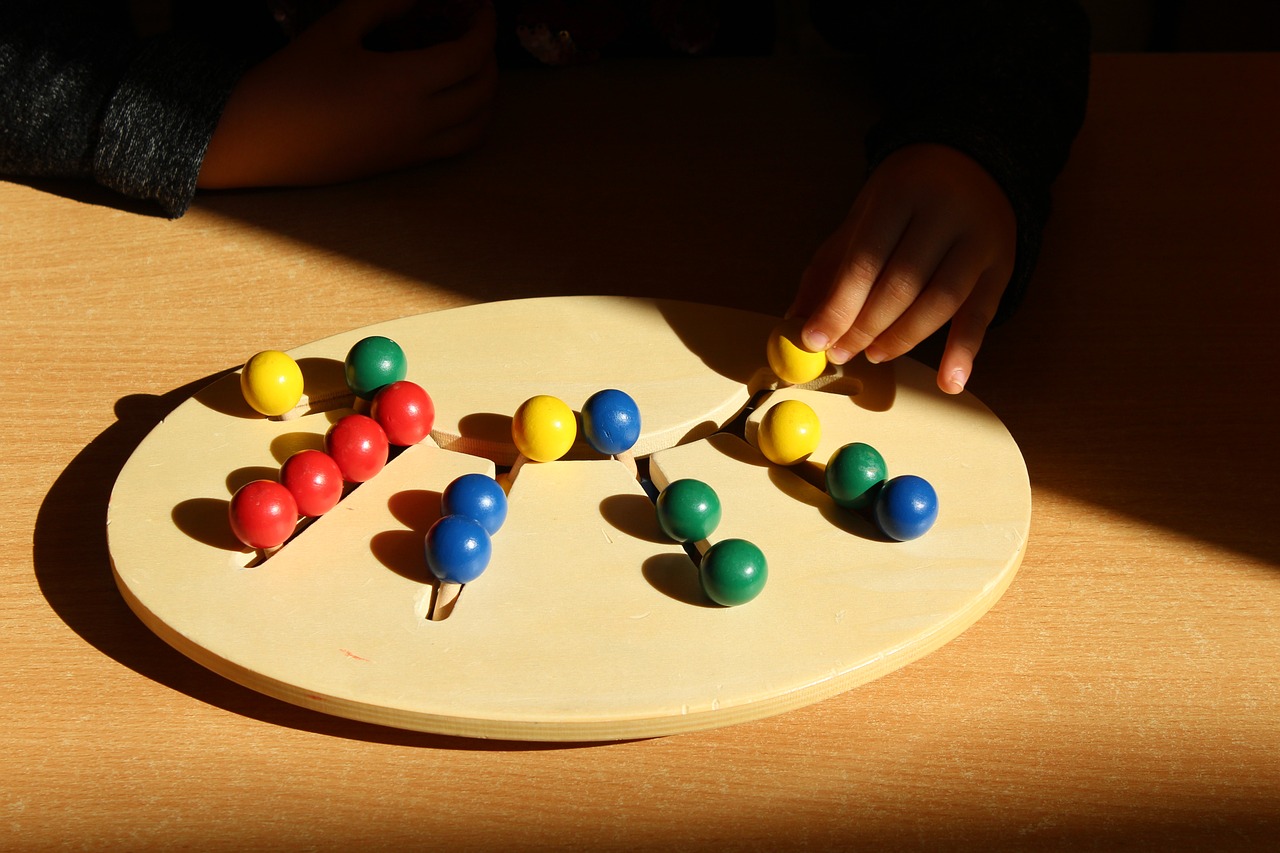
The Foundations of Logic
Logic serves as the backbone of mathematical reasoning, acting as a guiding compass that helps us navigate the intricate landscape of mathematical truths. At its core, logic is about understanding the principles that govern valid reasoning and argumentation. It provides a structured framework for evaluating the truth of statements, making it an essential tool in the mathematician's toolkit. Imagine trying to build a house without a solid foundation; similarly, mathematics would crumble without the principles of logic to support it.
Formal logic can be broadly categorized into two main types: propositional logic and predicate logic. Propositional logic deals with propositions, which are statements that can be either true or false. For example, "The sky is blue" is a proposition. In contrast, predicate logic extends this idea by incorporating quantifiers and variables, allowing for more complex statements. For instance, instead of just saying "All cats are mammals," we can express this in predicate logic as "For every x, if x is a cat, then x is a mammal." This added layer of complexity enables mathematicians to express and analyze relationships between different elements more effectively.
Understanding these logical principles is crucial for constructing mathematical proofs. A proof is essentially a logical argument that establishes the truth of a mathematical statement. It’s like a well-crafted story, where each chapter builds upon the previous one to lead to a satisfying conclusion. In the world of mathematics, a proof is not just a formality; it is the bedrock upon which mathematical knowledge is built. Without rigorous proofs, we would be left with mere conjectures, floating in a sea of uncertainty.
To illustrate the importance of logic in mathematics, consider the following table that outlines some fundamental logical operations:
| Operation | Description | Example |
|---|---|---|
| Conjunction | Logical AND; true if both propositions are true. | P: "It is raining" and Q: "It is cold" → P ∧ Q |
| Disjunction | Logical OR; true if at least one proposition is true. | P: "It is raining" or Q: "It is cold" → P ∨ Q |
| Negation | Logical NOT; inverts the truth value of a proposition. | ¬P: "It is not raining" |
| Implication | Logical IF-THEN; true unless a true proposition leads to a false one. | P → Q: "If it is raining, then it is cold" |
These operations form the building blocks of logical reasoning, allowing mathematicians to construct complex arguments with clarity and precision. By mastering these concepts, one can unlock the door to advanced mathematical theories and applications.
In conclusion, the foundations of logic are not merely academic; they are the very essence of mathematical thought. By understanding and applying these principles, we can enhance our ability to reason, prove, and ultimately comprehend the beautiful world of mathematics. So, the next time you tackle a mathematical problem, remember that logic is your trusty guide, illuminating the path to understanding and discovery.
- What is the difference between propositional and predicate logic? Propositional logic deals with simple statements that can be true or false, while predicate logic involves variables and quantifiers, allowing for more complex expressions.
- Why are proofs important in mathematics? Proofs provide a rigorous foundation for mathematical statements, ensuring their validity and reliability.
- How do logical operations apply to everyday reasoning? Logical operations help clarify our reasoning processes, allowing us to make sound decisions based on true premises.

Understanding Set Theory
Set theory is a fundamental branch of mathematics that deals with the concept of collections of objects, known as sets. Imagine you're at a party, and you see different groups of people chatting. Each group represents a set, containing individuals who share something in common, whether it's a love for a particular genre of music or a mutual friend. In mathematics, sets are used to group objects based on shared properties, and they provide a powerful language for discussing and analyzing these collections.
At its core, set theory allows us to define and manipulate these collections in a structured way. A set is typically denoted by curly braces, like {1, 2, 3}, where the numbers inside represent the elements of the set. Sets can contain anything: numbers, letters, or even other sets. For example, you could have a set of fruits: {apple, banana, cherry}. The beauty of set theory lies in its ability to simplify complex mathematical ideas into more manageable forms.
One of the key concepts in set theory is the idea of subsets. A subset is a set that contains some or all elements of another set. For instance, if we take the set of all fruits {apple, banana, cherry}, a subset could be {banana}. This relationship is crucial in understanding how sets interact with each other and lays the groundwork for various mathematical operations and properties.
Set theory also introduces us to various operations that can be performed on sets. These operations include:
- Union: The union of two sets is a new set that contains all elements from both sets. For example, if set A {1, 2} and set B {2, 3}, then the union A ∪ B {1, 2, 3}.
- Intersection: The intersection of two sets is a new set that contains only the elements that are present in both sets. Using the previous example, the intersection A ∩ B {2}.
- Difference: The difference of two sets is a new set that contains elements that are in the first set but not in the second. For A and B, the difference A - B {1}.
These operations are not just academic; they have real-world applications. For instance, in database management, understanding how to combine and differentiate sets can help in querying data efficiently. Set theory is also the foundation for more advanced mathematical concepts, including functions, relations, and even algebra.
To put it all together, set theory is like a toolbox for mathematicians. It provides the essential tools to categorize, analyze, and manipulate collections of objects, paving the way for deeper explorations into the realm of mathematics. Whether you're dealing with finite sets, infinite sets, or exploring the intricate relationships between them, set theory is an indispensable part of the mathematical landscape.
- What is a set in mathematics?
A set is a collection of distinct objects, considered as an object in its own right. Sets can contain numbers, letters, or even other sets. - What is the difference between a subset and a set?
A subset is a set that contains some or all elements of another set. For example, if A {1, 2, 3}, then {1, 2} is a subset of A. - How are sets used in real life?
Sets are used in various fields, including computer science for database management, statistics for data analysis, and logic for reasoning and problem-solving.
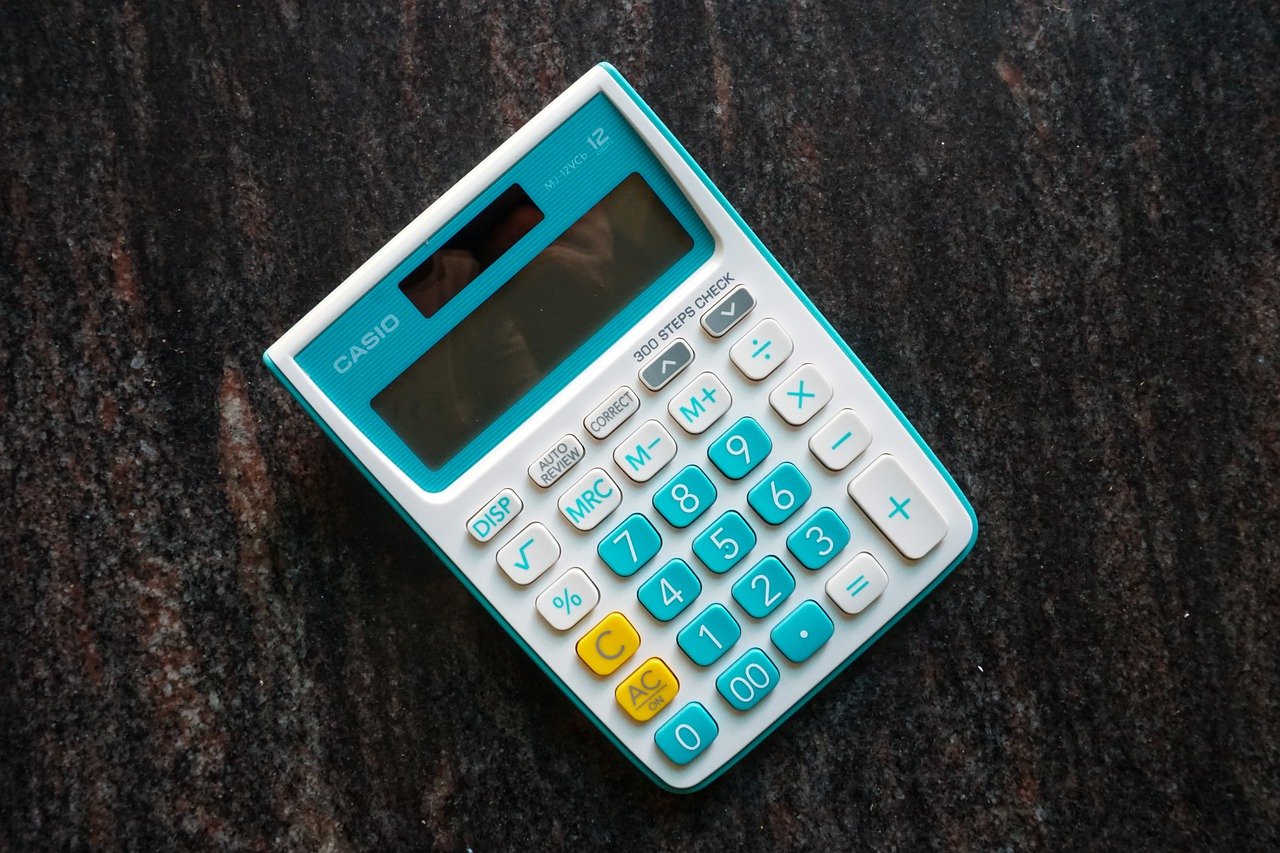
Types of Sets
When diving into the world of mathematics, one quickly realizes that sets are not just mere collections of objects; they are the building blocks of mathematical reasoning. Understanding the different types of sets is crucial for grasping more complex mathematical concepts. At the heart of set theory, we find several key categories: finite sets, infinite sets, and the enigmatic empty set. Each type has its own unique properties and implications, which we'll explore in detail.
A finite set is one that contains a limited number of elements. Imagine a box of chocolates; if it holds ten pieces, then you have a finite set of chocolates. The beauty of finite sets lies in their simplicity and the ease with which we can count their elements. For instance, the set of natural numbers less than 5 can be represented as {1, 2, 3, 4}. This set is clearly finite, as it contains only four elements.
On the other hand, infinite sets stretch the imagination. These sets contain an endless number of elements, making them a bit more challenging to comprehend. Consider the set of all natural numbers: {1, 2, 3, 4, ...}. This set goes on forever! Infinite sets can be further classified into countable and uncountable sets. Countable infinite sets, like the set of all integers, can be matched one-to-one with the natural numbers. In contrast, uncountable sets, such as the set of real numbers, are so vast that they cannot be enumerated in this way.
Now, let's not forget the empty set, often denoted by the symbol ∅. This set contains no elements at all. Think of it as an empty jar; it is still a set, but it holds nothing. The empty set is significant in mathematics because it serves as the foundation for building other sets. It’s like the starting point on a number line, providing a crucial reference point in various mathematical contexts.
To summarize the types of sets, here’s a quick overview:
| Type of Set | Description | Example |
|---|---|---|
| Finite Set | Contains a limited number of elements. | {1, 2, 3} |
| Infinite Set | Contains an endless number of elements. | {1, 2, 3, ...} |
| Empty Set | Contains no elements. | ∅ |
Understanding these types of sets lays the groundwork for exploring more complex mathematical ideas. Whether we're dealing with finite numbers or the infinite expanse of possibilities, sets provide a framework that enables mathematicians to communicate and reason effectively. As we continue our journey through logic and set theory, keep these categories in mind, as they will serve as essential tools in your mathematical toolkit.

Finite vs. Infinite Sets
When we dive into the world of sets, one of the most fundamental distinctions we encounter is between finite and infinite sets. This distinction is not just a trivial classification; it holds profound implications for how we understand mathematics itself. A finite set is one that contains a specific, countable number of elements. For example, consider the set of all fingers on your hands: {thumb, index, middle, ring, pinky}. This set has exactly five elements, making it finite. In contrast, an infinite set is one that goes on forever, containing an uncountable number of elements. A classic example is the set of natural numbers: {1, 2, 3, 4, ...}, which continues indefinitely.
The implications of these two types of sets stretch far beyond mere definitions. Finite sets are often easier to work with, as we can apply standard counting techniques and operations without much hassle. However, infinite sets introduce a layer of complexity that can be both fascinating and perplexing. For instance, did you know that not all infinities are created equal? This concept is beautifully illustrated by the comparison between the set of natural numbers and the set of real numbers. While both sets are infinite, the real numbers are uncountably infinite, meaning they can’t be matched one-to-one with the natural numbers. This leads us to the intriguing world of cardinality, a measure of the "size" of a set, which becomes a crucial concept when dealing with infinite sets.
To further illustrate the differences, let’s break down some key characteristics:
| Characteristic | Finite Sets | Infinite Sets |
|---|---|---|
| Countability | Countable | Uncountable |
| Examples | {1, 2, 3} | {1, 2, 3, ...} |
| Cardinality | Specific number | Infinite cardinality |
| Operations | Standard arithmetic | Complex operations |
Understanding the difference between finite and infinite sets is essential for grasping more complex mathematical concepts. For instance, in calculus, we often deal with limits and infinite series, which rely heavily on the properties of infinite sets. The exploration of infinite sets leads to questions that challenge our intuition: How can something be larger than infinity? This question is not just a philosophical musing; it has real mathematical implications in fields such as topology and analysis.
In summary, the distinction between finite and infinite sets is more than just a mathematical curiosity. It serves as a gateway to deeper understanding in various branches of mathematics, prompting us to rethink our assumptions about size, countability, and the very nature of mathematical existence. As we continue to explore these concepts, we uncover a rich tapestry of ideas that challenge our understanding and inspire further inquiry.

Power Sets
Power sets are a fascinating concept in set theory that delve into the very nature of collections and their subsets. To put it simply, the power set of any given set is the set of all possible subsets that can be formed from that original set, including the empty set and the set itself. For instance, if we take a set S {a, b}, the power set of S, denoted as P(S), would be P(S) {∅, {a}, {b}, {a, b}}. This concept not only reveals the richness of set theory but also introduces us to a variety of mathematical applications and implications.
The size of a power set is particularly interesting. If a set contains n elements, its power set will contain 2n elements. This exponential growth highlights how even a small set can lead to a vast number of subsets. For example, consider a set with three elements, say T {1, 2, 3}. The power set P(T) would consist of:
| Subset |
|---|
| ∅ |
| {1} |
| {2} |
| {3} |
| {1, 2} |
| {1, 3} |
| {2, 3} |
| {1, 2, 3} |
This leads us to consider the implications of power sets in various mathematical contexts. The concept is not just an abstract notion; it has practical applications in areas such as combinatorics, probability, and even computer science. For instance, when dealing with binary representations, each element in a set can either be included or excluded from a subset, leading to the binary counting system that underpins much of modern computing.
Moreover, power sets invite us to ponder deeper philosophical questions about the nature of existence and the infinite. When we think about infinite sets, the power set becomes even more intriguing. For example, the power set of the natural numbers is uncountably infinite, which leads to discussions about different sizes of infinity. This is famously illustrated by Cantor's theorem, which states that the power set of any set has a strictly greater cardinality than the set itself. Such revelations can be mind-boggling, prompting us to rethink our understanding of mathematics and its foundations.
In summary, power sets are not merely a mathematical curiosity; they are a gateway into exploring the very essence of set theory and its philosophical implications. Understanding power sets helps us appreciate the complexity and beauty of mathematics, reminding us that even simple concepts can lead to profound insights.
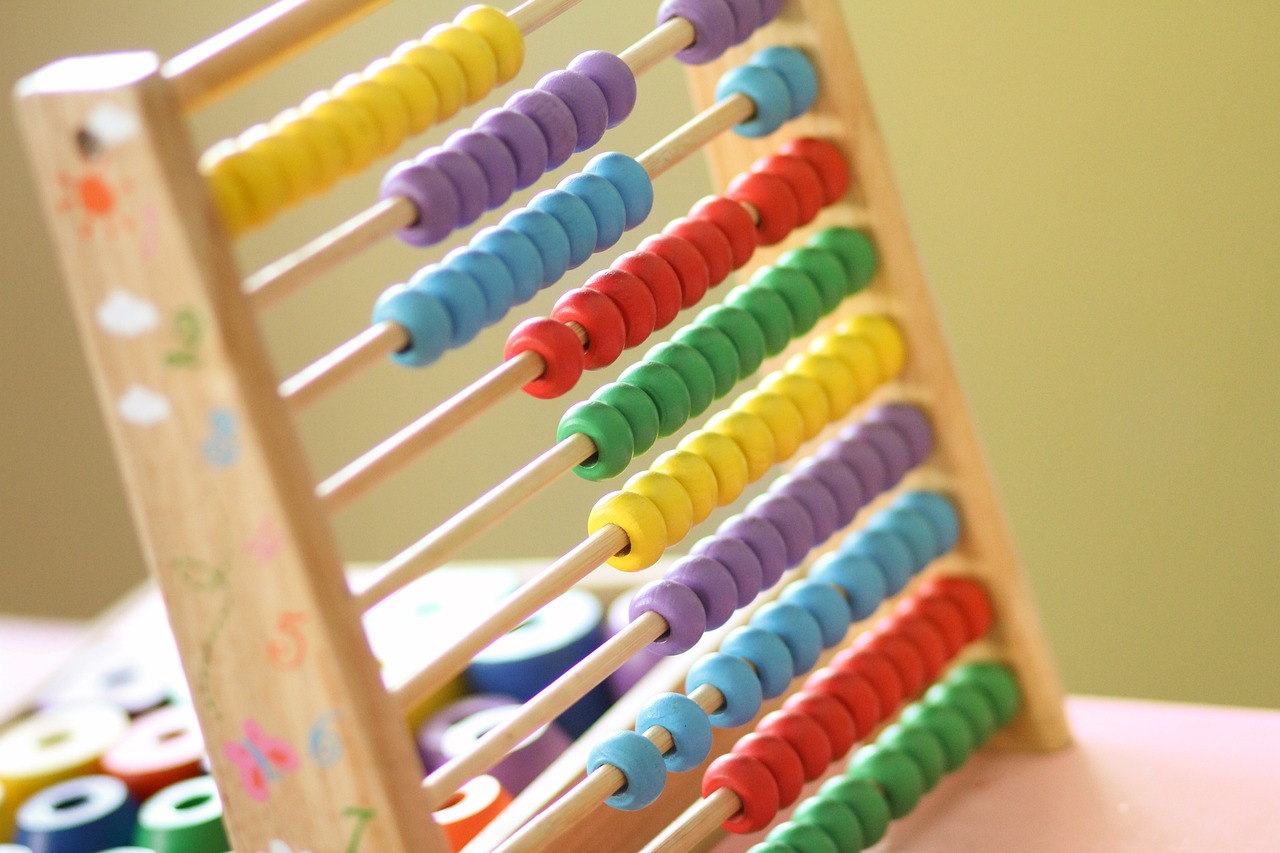
Set Operations
Set operations are fundamental tools in set theory that allow us to manipulate and analyze collections of objects. Think of sets as boxes filled with various items, and set operations as the ways we can interact with these boxes. The three primary operations we will delve into are union, intersection, and difference. Each of these operations serves a unique purpose and is essential for solving mathematical problems involving sets.
The union of two sets, denoted as A ∪ B, combines all the elements from both sets, ensuring that each element appears only once. For example, if we have two sets:
- A {1, 2, 3}
- B {3, 4, 5}
Next, we have the intersection, represented as A ∩ B. This operation identifies the common elements shared between two sets. Continuing with our previous example, the intersection of sets A and B would yield A ∩ B {3}, since 3 is the only element present in both sets. This operation is crucial in scenarios where we want to find overlapping characteristics or shared traits between different groups.
The difference, denoted as A - B, refers to the elements that are present in set A but not in set B. Using our example, the difference would be A - B {1, 2}, as these elements are unique to set A. Conversely, if we were to calculate B - A, we would find B - A {4, 5}. Understanding this operation helps in identifying what makes one set unique compared to another.
To further illustrate these operations, let's look at a table summarizing them:
| Operation | Notation | Description | Example |
|---|---|---|---|
| Union | A ∪ B | Combines all unique elements from both sets | {1, 2, 3} ∪ {3, 4, 5} {1, 2, 3, 4, 5} |
| Intersection | A ∩ B | Identifies common elements between sets | {1, 2, 3} ∩ {3, 4, 5} {3} |
| Difference | A - B | Elements in A that are not in B | {1, 2, 3} - {3, 4, 5} {1, 2} |
These operations are not just theoretical; they have practical applications in various fields such as computer science, statistics, and logic. For instance, in database management, set operations can help in querying data efficiently, allowing us to retrieve or manipulate information based on specific criteria. So, the next time you think about sets, remember that these operations are like the tools in a toolbox—each one designed for a specific task but working together to help us understand and navigate the world of mathematics more effectively.
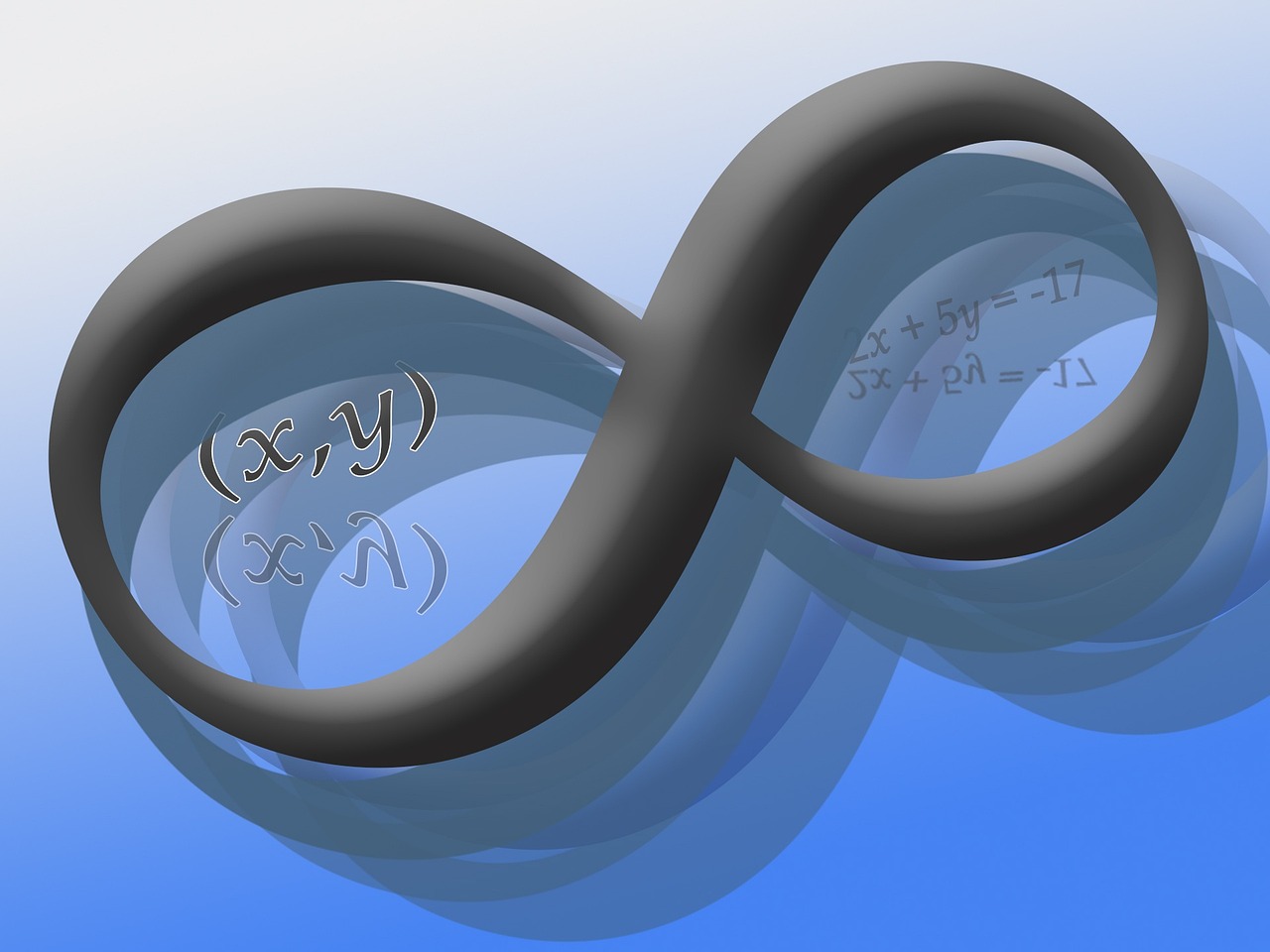
Philosophical Implications of Set Theory
Set theory is not just a collection of mathematical concepts; it is a gateway into profound philosophical discussions that challenge our understanding of existence and reality. At its core, set theory raises intriguing questions about the nature of mathematical objects, leading us to ponder: do these entities truly exist, or are they mere constructs of human thought? This inquiry dives deep into the philosophical waters of mathematical realism and anti-realism, which form the crux of the debate surrounding the existence of sets.
Mathematical realism posits that mathematical entities exist independently of human thought. Proponents argue that numbers, sets, and other mathematical objects are real and can be discovered, much like physical objects in the universe. This view suggests that when mathematicians work with sets, they are uncovering truths that exist regardless of whether anyone is aware of them. For instance, the set of all natural numbers is thought to exist in some abstract realm, waiting to be explored.
On the other hand, mathematical anti-realism challenges this notion. Anti-realists assert that mathematical objects do not exist outside of our conceptual frameworks. They argue that sets are simply useful fictions, tools created to facilitate our understanding of mathematics. This perspective emphasizes the role of human cognition in shaping mathematical truths, suggesting that without human minds to conceive of them, sets and numbers have no independent existence. This philosophical stance leads to the conclusion that mathematics is more about the relationships we create rather than discovering an objective reality.
To illustrate these contrasting views, consider the following table:
| Aspect | Mathematical Realism | Mathematical Anti-Realism |
|---|---|---|
| Existence of Sets | Sets exist independently of human thought | Sets are constructs of human cognition |
| Nature of Mathematical Truth | Truths are discovered | Truths are created |
| Role of Mathematicians | Explorers of an objective reality | Creators of useful tools |
Another fascinating aspect of set theory is the paradoxes that arise within its framework, such as Russell's Paradox. This paradox challenges the very foundation of set theory by revealing inconsistencies in the naive conception of sets. Russell's Paradox arises when we consider the set of all sets that do not contain themselves. If such a set exists, it leads to a contradiction: if it contains itself, then by definition it should not; if it does not contain itself, then it must contain itself. This paradox not only unsettles our understanding of sets but also prompts deeper philosophical inquiries into the nature of self-reference and the limits of formal systems.
In conclusion, the philosophical implications of set theory extend far beyond the realm of mathematics. They invite us to question the very nature of existence and the role of human thought in shaping our understanding of reality. Whether one aligns with the realist or anti-realist perspective, engaging with these ideas enriches our appreciation of mathematics as a profound and complex discipline that intertwines with philosophy in unexpected ways.
- What is set theory? Set theory is a branch of mathematical logic that studies sets, which are collections of objects.
- Why are philosophical implications important in set theory? They help us understand the nature of mathematical objects and the underlying principles of mathematical truth.
- What is Russell's Paradox? It is a paradox that arises in naive set theory, highlighting inconsistencies in the definition of sets.
- How does set theory relate to mathematical realism and anti-realism? Set theory provides a context for exploring whether mathematical entities exist independently or are merely constructs of human thought.

Mathematical Realism vs. Anti-Realism
When we dive into the philosophical waters of mathematics, we encounter two prominent schools of thought: mathematical realism and anti-realism. These perspectives offer contrasting views on the existence of mathematical entities and the nature of mathematical truths. So, what exactly do they entail?
Mathematical realism posits that mathematical objects, such as numbers and sets, exist independently of human thought. Think of it like discovering a hidden treasure; the treasure exists whether or not you've found it. Realists argue that mathematical truths are objective and that our mathematical theories aim to describe these truths accurately. For example, when we say that there are infinitely many prime numbers, a realist would assert that this statement reflects a reality that exists outside of our minds.
On the flip side, we have anti-realism, which challenges the notion of independent mathematical existence. Anti-realists contend that mathematical entities are merely useful fictions created by humans to describe patterns and relationships in the world around us. In this view, mathematics is akin to a language we invent to communicate ideas rather than a discovery of pre-existing truths. For example, an anti-realist might argue that while the concept of a "triangle" is useful, it doesn't exist outside of our definitions and contexts.
To better understand the implications of these perspectives, let's take a look at some key differences:
| Aspect | Mathematical Realism | Anti-Realism |
|---|---|---|
| Existence of Mathematical Entities | Independent and objective | Constructed and subjective |
| Nature of Mathematical Truths | Discovered | Invented |
| Role of Mathematics | Descriptive of reality | Tool for understanding |
This debate has profound implications not only for the philosophy of mathematics but also for how we approach mathematical education and practice. For instance, if educators lean towards realism, they might emphasize the objective nature of mathematical truths, encouraging students to discover these truths. Conversely, an anti-realist approach might foster creativity in mathematical thinking, inviting students to explore and invent their own mathematical concepts.
Ultimately, the dialogue between mathematical realism and anti-realism enriches our understanding of mathematics. It challenges us to reflect on what we believe about the nature of mathematical objects and truths. Are they out there waiting for us to find them, or are they simply constructs of our imagination? This philosophical inquiry not only deepens our appreciation for mathematics but also invites us to engage with it more meaningfully.
- What is mathematical realism? It is the belief that mathematical entities exist independently of human thought.
- What is anti-realism? It is the view that mathematical entities are human-made constructs.
- Why does this debate matter? It influences how we understand and teach mathematics, shaping our approach to learning and discovery.
- Can one be both a realist and an anti-realist? Some philosophers argue for a middle ground, suggesting that while some mathematical entities may exist independently, others are indeed human constructs.
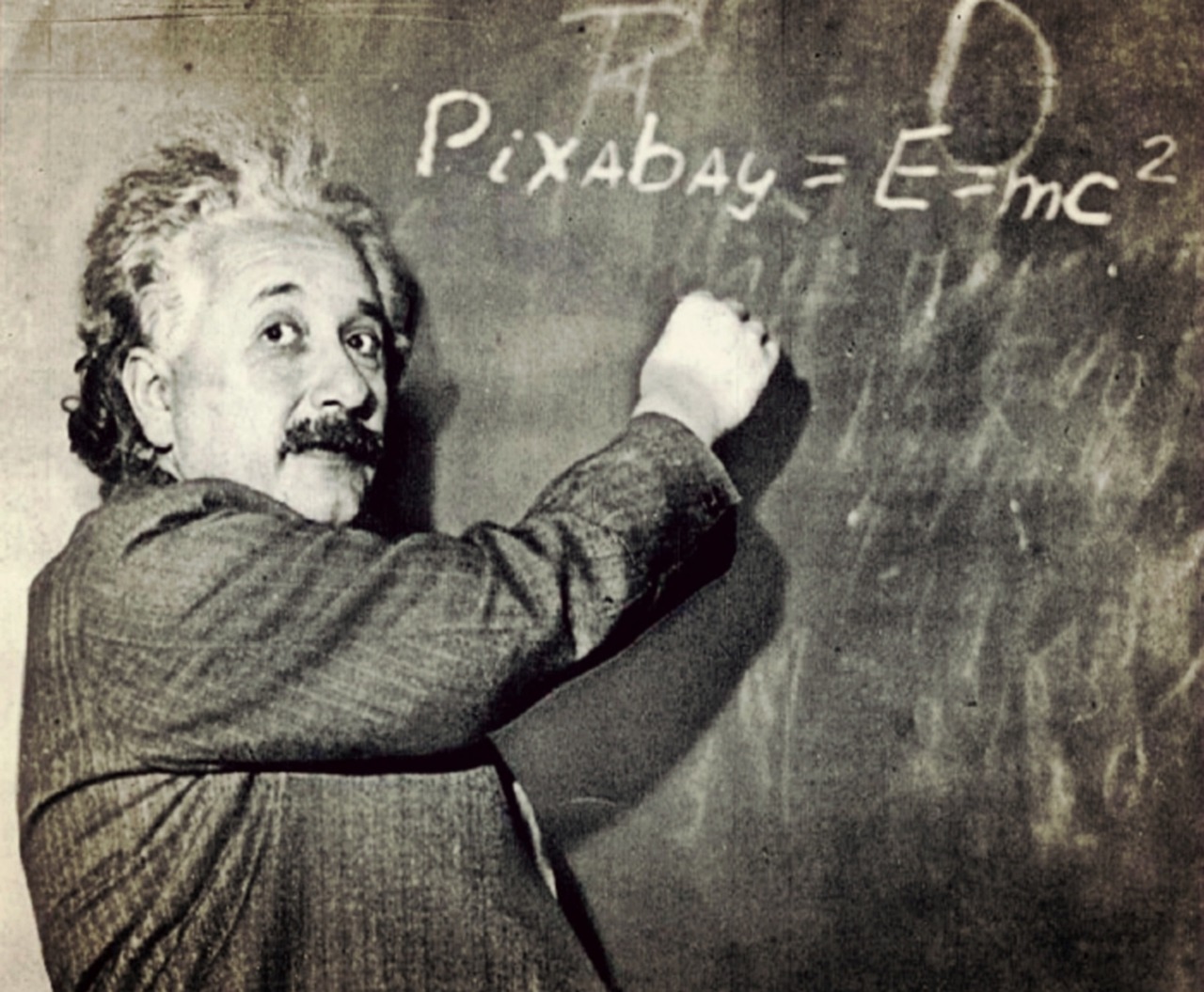
Paradoxes in Set Theory
Set theory, while being a fundamental pillar of modern mathematics, is not without its quirks and conundrums. One of the most famous of these is Russell's Paradox. This paradox challenges our intuitive understanding of sets by presenting a scenario where a set can both contain and not contain itself, leading to a logical contradiction. Imagine a set that includes all sets that do not contain themselves. If this set contains itself, then by definition, it should not. Conversely, if it does not contain itself, then it must contain itself. This paradox serves as a wake-up call, prompting mathematicians and philosophers alike to reconsider the foundations of set theory.
The implications of Russell's Paradox extend far beyond mere academic curiosity. It forces us to confront the very nature of mathematical objects and the axiomatic systems we use to define them. In response to such paradoxes, various axiomatic systems have been developed, such as Zermelo-Fraenkel set theory (ZF) with the Axiom of Choice (ZFC), which aims to avoid these contradictions by imposing stricter rules on how sets can be formed.
Another notable paradox is the Burali-Forti Paradox, which arises when we try to define the set of all ordinal numbers. Just like Russell's Paradox, it leads to a contradiction, suggesting that the set of all ordinals cannot exist. This paradox highlights the limitations of our conventional understanding of infinity and raises questions about the hierarchy of infinite sets.
To better grasp these paradoxes, let's consider a table that summarizes some of the key paradoxes in set theory along with their implications:
| Paradox | Description | Implications |
|---|---|---|
| Russell's Paradox | A set that contains all sets that do not contain themselves. | Challenges the concept of a universal set. |
| Burali-Forti Paradox | The set of all ordinal numbers leads to contradictions. | Questions the existence of a 'largest' ordinal. |
| Cantor's Paradox | Contradiction arising from the set of all sets that can be put in one-to-one correspondence with the natural numbers. | Challenges the notion of different sizes of infinity. |
These paradoxes are not mere intellectual puzzles; they have profound implications for the philosophy of mathematics. They challenge our understanding of infinity, the nature of sets, and even the validity of mathematical reasoning itself. The existence of these paradoxes has led to a rich field of study that seeks to clarify the foundations of mathematics, ensuring that we can build a coherent framework that avoids these logical traps.
As we navigate through the intricate landscape of set theory, it becomes clear that paradoxes are not just obstacles but also gateways to deeper understanding. They compel us to question our assumptions and refine our theories, ultimately enriching our comprehension of the mathematical universe.
- What is Russell's Paradox? Russell's Paradox is a contradiction that arises from considering the set of all sets that do not contain themselves.
- How do paradoxes affect set theory? Paradoxes challenge the foundational principles of set theory and lead to the development of more robust axiomatic systems.
- What is the significance of Zermelo-Fraenkel set theory? Zermelo-Fraenkel set theory provides a framework that helps avoid paradoxes by restricting how sets can be constructed.
Frequently Asked Questions
- What is the relationship between logic and set theory?
Logic and set theory are deeply intertwined in the realm of mathematics. Logic provides the rules and frameworks for reasoning, while set theory offers a way to discuss and manipulate collections of objects. Together, they form the foundation of mathematical proofs and concepts, enabling mathematicians to explore complex ideas systematically.
- What are the basic types of sets?
Sets can be categorized into several types, including finite sets, infinite sets, and empty sets. A finite set has a limited number of elements, while an infinite set continues indefinitely. An empty set, as the name suggests, contains no elements at all. Understanding these distinctions is crucial for grasping more advanced mathematical concepts.
- Can you explain the difference between finite and infinite sets?
Absolutely! Finite sets are like a small box of chocolates—you can count them all and know exactly how many there are. Infinite sets, on the other hand, are like the stars in the sky; no matter how hard you try, you can never count them all. This fundamental difference has significant implications in mathematics, especially in areas like calculus and number theory.
- What is a power set?
A power set is a fascinating concept in set theory. It consists of all possible subsets of a given set, including the empty set and the set itself. For example, if you have a set with three elements, {A, B, C}, its power set will contain eight subsets: {}, {A}, {B}, {C}, {A, B}, {A, C}, {B, C}, and {A, B, C}. This idea is crucial in combinatorial mathematics and helps in understanding more complex structures.
- What are some common set operations?
Set operations are like the tools in a mathematician's toolbox. The most common operations include union (combining sets), intersection (finding common elements), and difference (identifying elements in one set that are not in another). Mastering these operations is essential for solving various mathematical problems and understanding relationships between sets.
- What are the philosophical implications of set theory?
Set theory raises intriguing philosophical questions about the nature of mathematical objects. For instance, the debate between mathematical realism, which posits that sets exist independently of human thought, and anti-realism, which argues that sets are merely useful constructs, challenges our understanding of mathematics. These discussions have profound implications for how we interpret mathematical truths and the existence of mathematical entities.
- What is Russell's Paradox?
Russell's Paradox is a famous contradiction in set theory that questions the existence of certain sets. It arises when considering the set of all sets that do not contain themselves. If such a set exists, it leads to a logical contradiction. This paradox has significant implications for the foundations of mathematics and has prompted mathematicians to refine the axioms of set theory to avoid such inconsistencies.



















